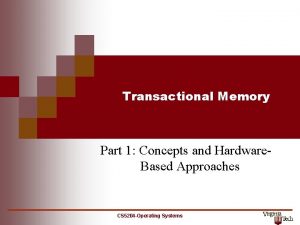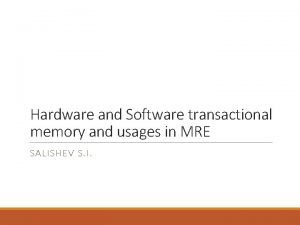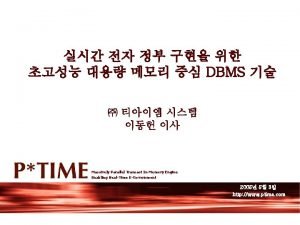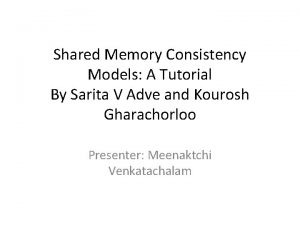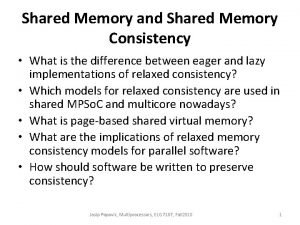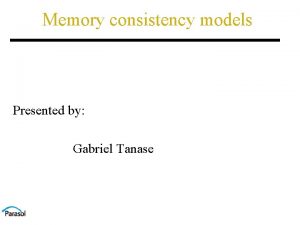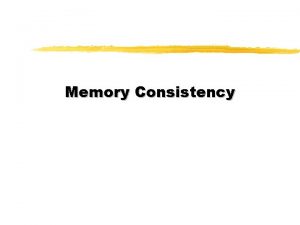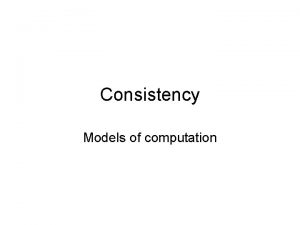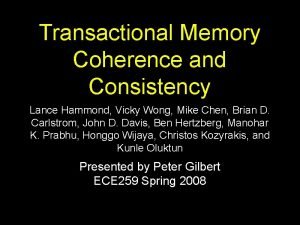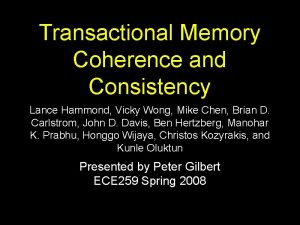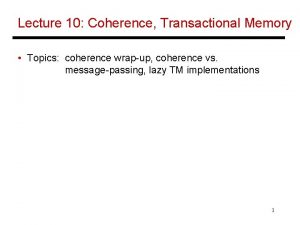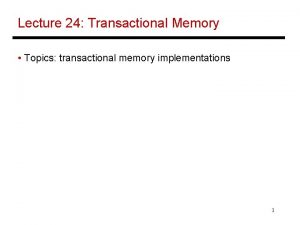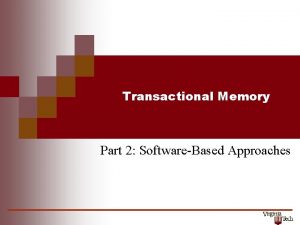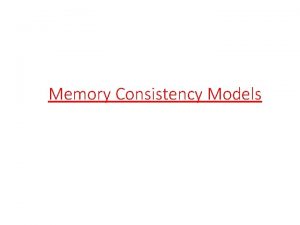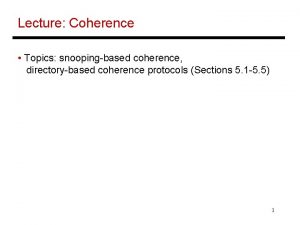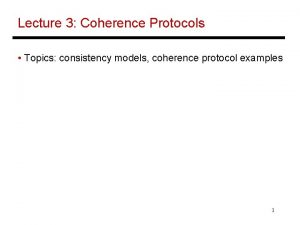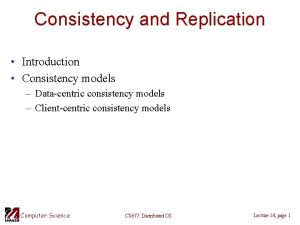Transactional Memory Coherence and Consistency Presented to CS














- Slides: 14

Transactional Memory Coherence and Consistency Presented to CS 258 on 4/28/08 by David Mc. Grogan

Review: Multiproc configurations • Message passing – Simple hardware – Tricky to program • Shared memory – Complex hardware – No implicit synchronization – Sometimes easier to program

Something new: TCC Transactional memory Coherence and Consistency model • • Provides transactional shared memory Requires specialty hardware Relies on broadcast and snooping Not infinitely scalable

Something new: TCC Transactional memory Coherence and Consistency model • Implements CCR (Conditional Critical Regions): atomic (condition) { statements; }

TCC protocol • • • Writes in a transaction stored locally System-wide commit arbitration All writes broadcasted as a packet Different commits cannot overlap Transactions can be ordered via hardware-managed ‘phase numbers’

TCC hardware • Extra cache bits • Write buffer • Commit control • Optional: Shadow registers Victim buffer

TCC hardware • Cache bits – Read (can be multiple per line) – Modified – Renamed (multiple) – entire associated word/byte has been written, so future reads can’t cause violations

TCC hardware • Write buffer – Hardware-based packet buffer – Lets processor do more important things • Commit control – Stores phase numbers for all other nodes – Reduces arbitration request traffic greatly

Optional TCC hardware • Shadow registers – Copy core registers upon transaction start – Permits rollback – Can be done in software • Victim buffer – Holds flushed read/modified cache lines – If absent, must wait for and hold commit permission until transaction commits

Errata • I/O – Input can only be accepted if rollback is impossible – Commit permission requested immediately • Hardware optimizations – Break up large transactions – Merge small transactions – Force forward progress by increasing phase

Cache state size • Most benchmarks operate within 12 k. B of read state and 8 k. B of write state • Easily fits in the smallest of modern caches

Performance (ideal) • Limited by sequential code, load imbalance, inter-transaction dependencies

Performance Errata • More realistic simulations – Viability retained in most cases – Sometimes crippled by very high commit arbitration times (200 cycles) • Various optimizations had little effect – Double-buffering write buffer – Extra read bits (sub-line read records)

 Bitcoin
Bitcoin Hardware transactional memory
Hardware transactional memory Transactional memory
Transactional memory Restricted transactional memory
Restricted transactional memory Danny hendler
Danny hendler C++ transactional memory
C++ transactional memory Shared memory consistency models: a tutorial
Shared memory consistency models: a tutorial Memory consistency models in distributed systems
Memory consistency models in distributed systems Processor consistency model
Processor consistency model Internal memory and external memory
Internal memory and external memory Primary memory and secondary memory
Primary memory and secondary memory Virtual memory
Virtual memory Prototype in semantics
Prototype in semantics Implicit explicit memory
Implicit explicit memory Long term memory vs short term memory
Long term memory vs short term memory


